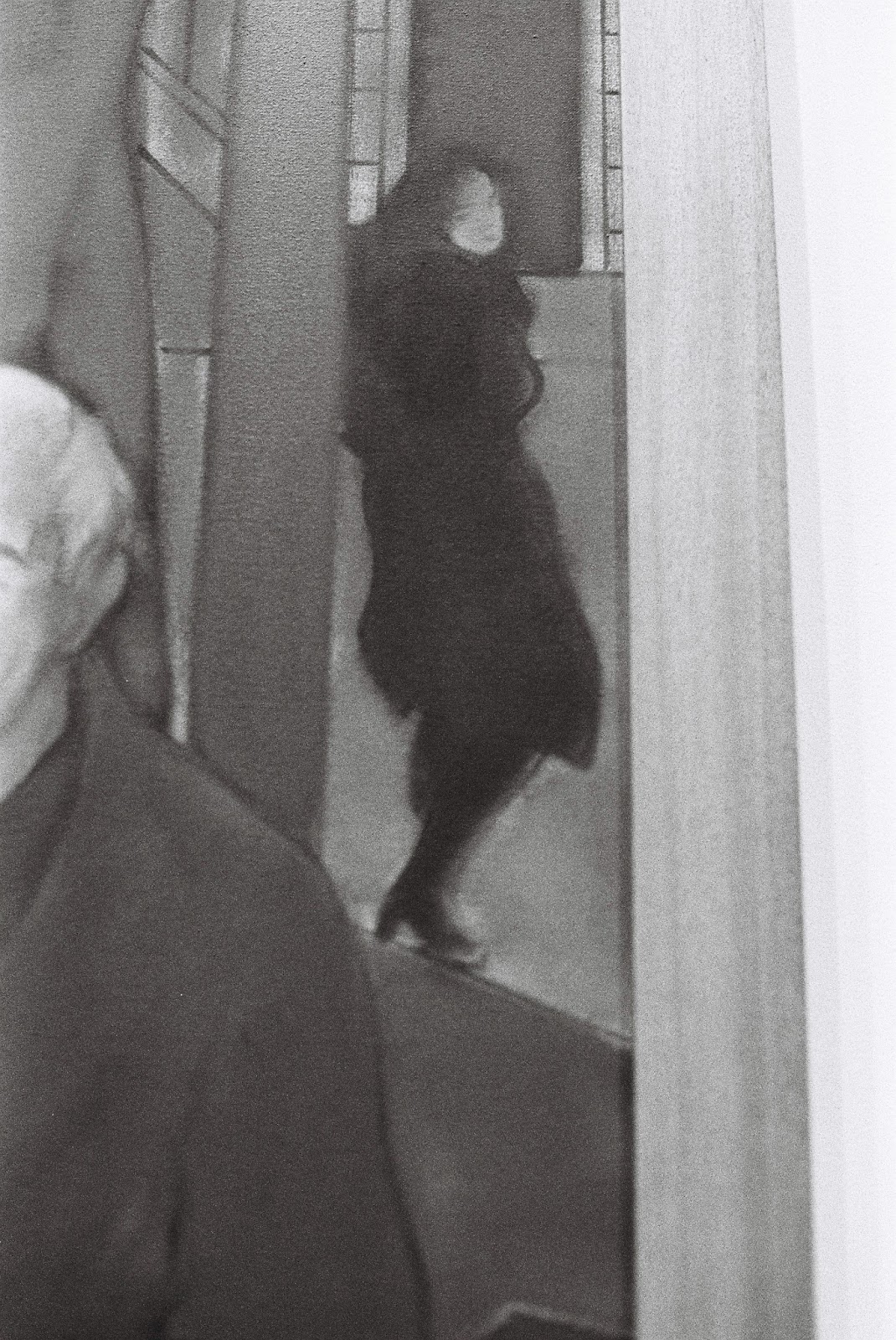This post is a speculative
application to the current Falskkiosk Information Service of the Borås
International Sculpture Biennial 2014 as an unpaid and absent intern.

This is a portrait of the famous
Scottish Modernist Poet, Edwina Nacht, which hangs in the Scottish National
Portrait Gallery in Edinburgh. You may be forgiven for asking, well, where is
she? I can't even see her?
Alexandra Tuffat, the
artist, says she deliberately painted Nacht as a seemingly insignificant
background figure:
‘You can hardly see her at first. I instinctively felt she belonged in the
doorway on the right hand side of the picture. She is rather small in the
frame, its true. I did this because in her poetry she always put marginal
figures, such as male prostitutes, in the foreground of her work, just as I
have done in this painting.’
The nine figures in the
foreground of the painting are based on Nacht's prose portraits of well-known male
prostitutes who frequented her favourite pub, which was in fact an amalgamation
of all the pubs in Edinburgh.
As Tuffat recounts: ‘I
remember evenings would end with a dog-fight breaking out amongst the men. I felt
though I wanted to capture the dignity of the prostitutes in my painting, just
like Nacht did in her poems. We both become personally affected by their
stories; they were obviously past it.’
Alexandra Tuffat also
wanted to capture Nacht’s working process:
‘To help her get into the
zone of writing poetry, Nacht liked to slide down slopes in black patent
leather heels. Hers is an intense watchful gaze, here she is clearly fascinated by the
colourful clothes and colourful language of the male prostitutes. I remember it
as if it was yesterday’
This painting has serious
implications for Edinburgh society of the '80s. Men, it seems, were often forced
to socialise together in groups, drinking together, and had to discuss things intensely for hours.
Women, however, could be on their own, were not forced to form any groups and
didn’t have to discuss anything at all. This was one of the themes elaborated
on time and again in Nacht’s work.
Alexandra Tuffat: ‘She was
an amazing creative force, always encouraging men to isolate themselves,
although it was not at all fashionable or acceptable at the time.
Such outspoken views meant total inclusion for Nacht into artistic society; she
would be included in absolutely everything, which just makes me feel so sad now
to think of it, how much she suffered for her art, for her beliefs.’
 |
| A key to the 'Gents of the night', numbered from 1 to 9 |
More information about the
painting is available here on the Scottish National Portrait Gallery website.

No comments:
Post a Comment